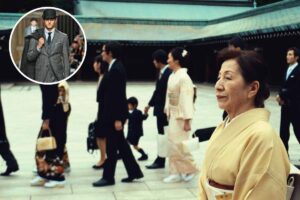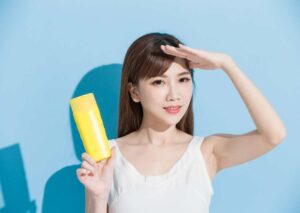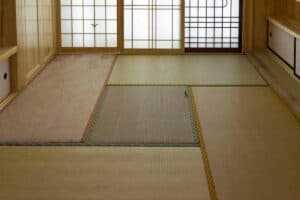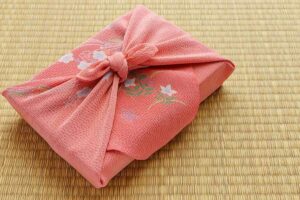When it comes to Japanese traditional dress, the kimono is at the forefront.
Thanks to its look, this style of dress is well-known throughout the world.
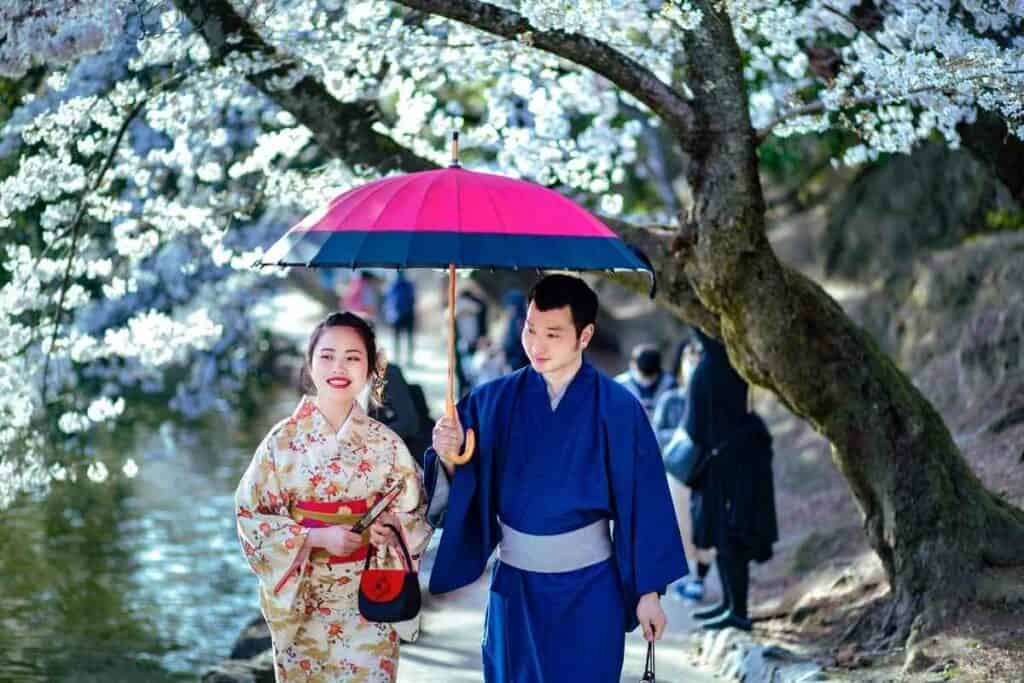
The kimono has long, wide sleeves and a decorative belt. We often see women and geisha wearing them, but do men wear kimonos?
The short answer is yes, men do wear kimonos! There are, however, some key differences, which we’ll discuss later in this article.
Read on to discover more about the Japanese kimono.
Table of Contents
Kimono history
The modern Japanese kimono actually originates in China from the Wu dynasty.
Between 800 and 1100 AD kimonos became a fundamental part of Japanese traditional dress.
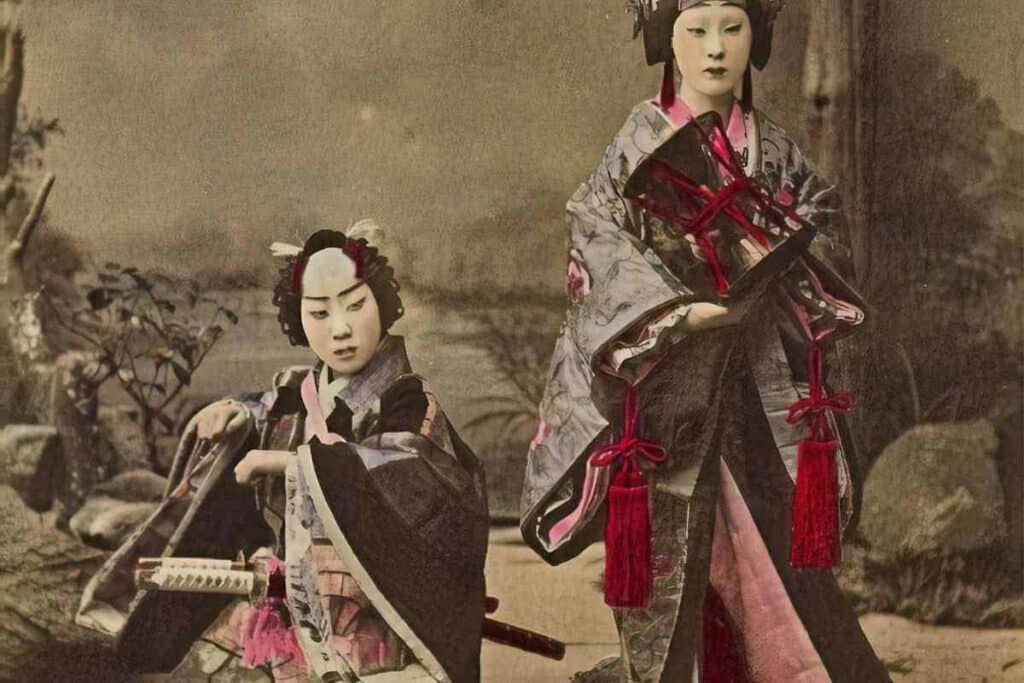
It was the standard practice to layer up silk robes, but this was eventually replaced with one straight-cut garment.
Between 794 and 1192 AD, the Heian period, silk robes became one piece by being sewn together. This meant they were adaptable for everyone, no matter their background.
From 1603 onward (the Edo period), the kimono became a popular, unisex garment.
Discover an impressive range of kimonos, belts, jackets, and more at our partner, the Japan Objects Shop. Dive into their collection to appreciate the richness of Japanese fashion.
Kimonos in modern times
Until just under one hundred years ago, most Japanese people would wear kimonos regularly.
Nowadays, however, most people only wear them for special occasions like weddings, festivals, and funerals, for example.
Do men wear kimonos?
As mentioned above, men do wear kimonos.
Just like for women, kimonos are part of men’s traditional dress in Japan. There are differences in styles, however.
First of All – It’s more common for men to wear a kimono that’s in two pieces. The pants are called hakama and cover the bottom half. These are worn for formal situations.
Another difference is that men’s kimonos have different patterns.
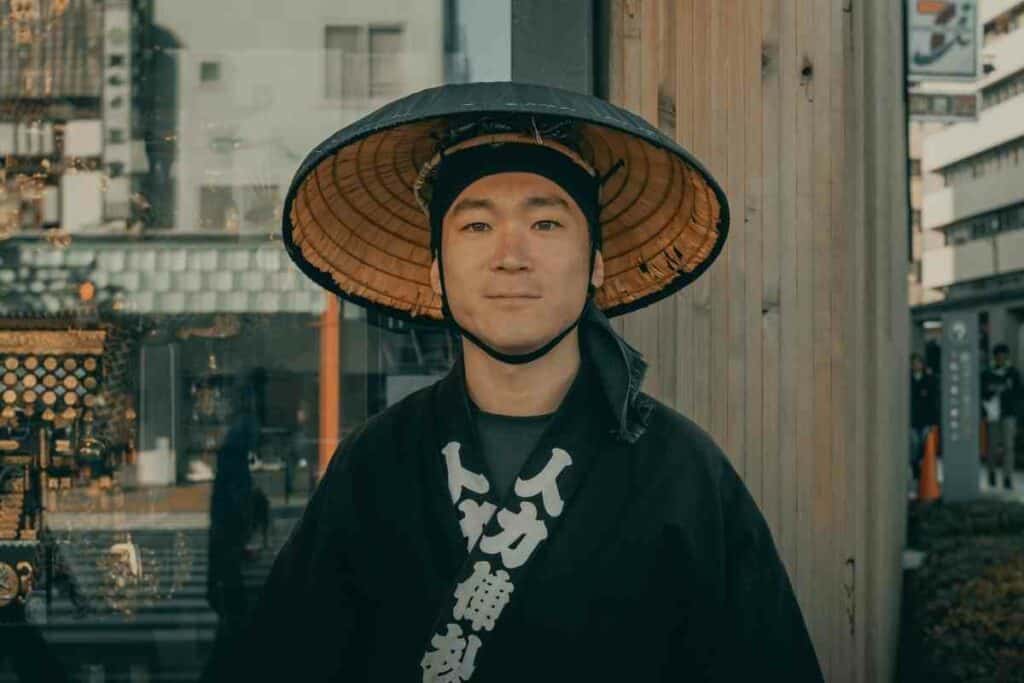
In fact, you’re unlikely to see any pattern or design at all. With a formal men’s kimono, you might see an embroidered family crest or kamon.
Compared to women’s elaborate patterns, men’s kimonos are vastly different.
Next to men’s plain kimonos, women’s are ornate and detailed. They often have nature patterns with floral designs.
Booking.comNowadays, it’s possible to find more modern patterns that include references to pop culture or include things like space nebula, etc.
As well as the fun pattern element to women’s kimonos, they also have brighter colors available:
- You’ll often see women in reds, pinks, and purples, which make for beautiful, eye-catching designs.
- Men’s kimonos, on the other hand, use more of a darker, subdued pallet comprising of navy, gray, brown, or black.
The obi that wraps around the middle to hold it together might provide a bit of color, but the rest is subtle in comparison.
One final element in terms of the difference between women’s and men’s kimonos is that there are differences in how a hierarchy or rank is distinguished by the kimono.
For Men: The material of the kimono will tell you about his formality or rank. For women, more elaborate and ornate kimonos mean the occasion is more formal or their rank is higher.
Kimonos for men
When you look at men’s kimonos, there are typically three distinct types.
Firstly, a man with a very high rank or someone who is being very formal, will wear a haori, hakama, and nagagi as a part of the kimono ensemble.
The haori is the traditional hip-length or thigh-length jacket that is worn over the top of a kimono.
It looks somewhat like a shorter kimono but doesn’t have overlapping panels. It will usually have a thinner collar too.
You would usually tie a haori with a couple of short cords. These are called haori himo and they’re attached to loops that are sewn inside the haori.
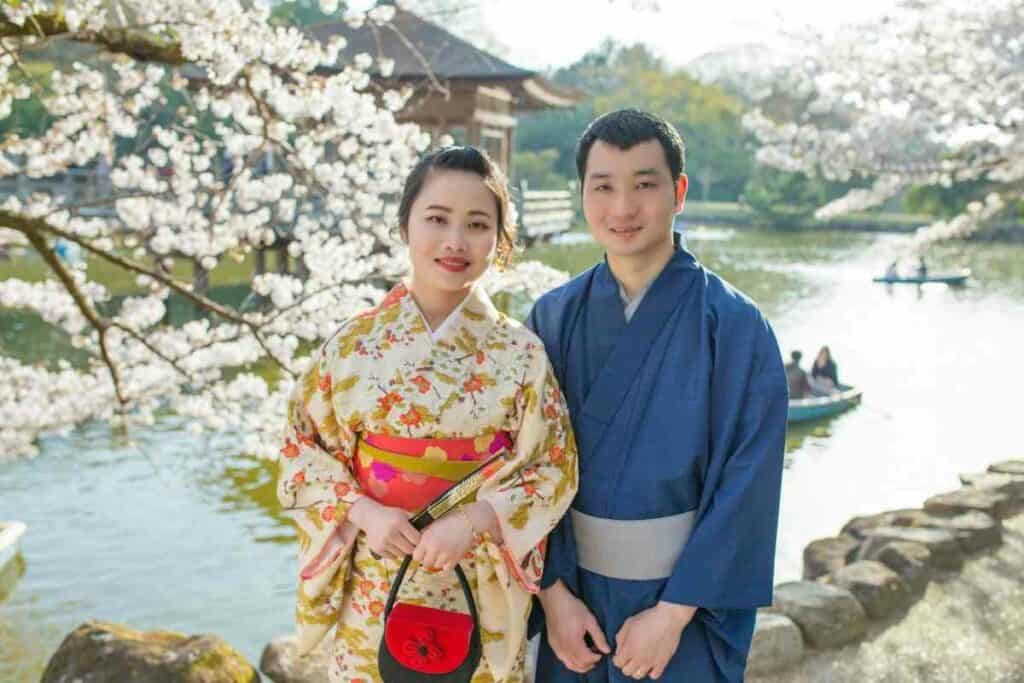
The hakama are Japanese loose pants while the nagagi is a type of kimono that doesn’t have pants. The hakama are often really loose, which makes it difficult to know where the legs are.
When someone just wears a nagagi, they’re either dressing informally or of a low rank.
For someone wearing a nagagi and haori but not a hakama, they’re somewhere in between in terms of rank or formality.
Keep In Mind – It’s also possible to wear a kimono without having a haori. This would be called kinagashi and it’s still considered to be formal enough for wearing out, but it isn’t too traditional.
Materials used for men’s kimonos
For the haori, you’ll usually have a basic silk weave called habutai.
This fabric is a high-grade and pure silk, which means it is smooth to touch, has a high gloss appearance, and is lightweight.
For the hakama, you’ll have Sendaihira silk, a silk that originates in the Sendai region. Lile habotai, it is glossy, but it also has a white and grey stripy pattern to it.
For the nagashi, you’ll either have tsumugi or omeshi.
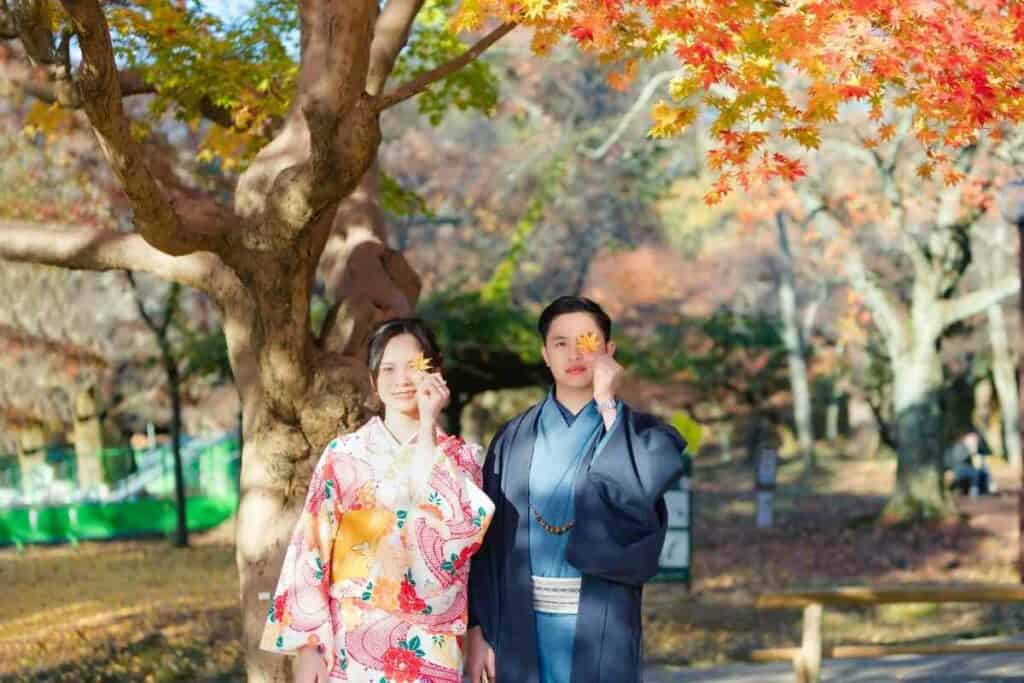
This depends on your social ranking of the occasion:
- Tsumugi is the less formal of the two. It is a silky, hand-spun fabric of high quality.
- Omeshi is considered more formal. This is a crêpe fabric, which is high gloss.
Men’s kimono types
Montsuki Kimono
The most formal of men’s kimonos are called the montsuki kimono.
This was used during the Edo period by men with samurai status.
This garment is now used for things like weddings, ceremonies, and funerals.
Iro montsuki haori hakama
This kimono differs from the montsuki kimono as it has a colored haori.
It is also used for celebrations like weddings, funerals, and other ceremonies.
This is considered to be less formal than the montsuki kimono, though it’s still quite formal.
The only different is that there are three kamon.
Haori Hakama
The next down in the rankings is the haori hakama.
This can be worn for things like:
- wedding receptions
- evening parties
- and ceremonies
Haori clothing
This type of outfit is work for informal gatherings.
You might wear it to a play, to meet friends, or to visit someone at new year.
Ki-nagashi
This is considered casual attire that you can wear for an informal occasion.
Most men would wear this without a haori.
You can wear this outfit for everyday activities like shopping or going for a walk.
More of the differences between men’s kimonos and women’s kimonos
There are three ways in which men’s kimonos differ from women’s.
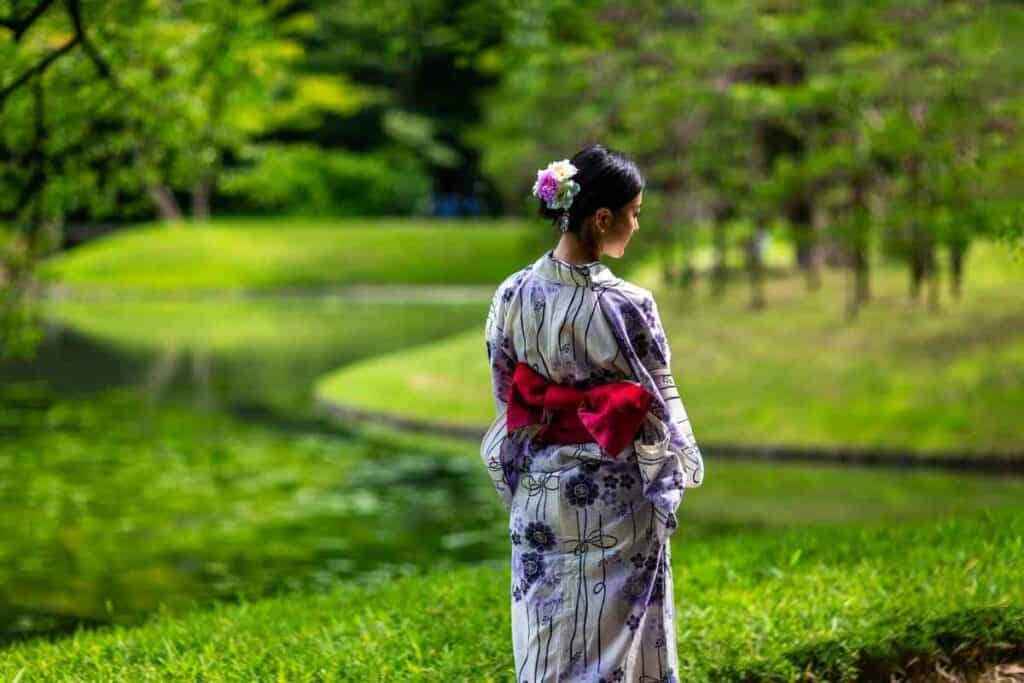
These differences are their color, pattern, and the pieces worn.
Color
Men’s kimonos are subtle in color.
They’re typically navy, grey, black, or brown.
Women’s kimonos are more vibrant. You’ll see lots of red, purple, and pink.
Patterns
Kimonos for men don’t usually have a strong pattern.
They’ll usually just have the family crest (the kamon) as a decorative feature on their formal kimono if they have anything at all.
Women’s kimonos, on the other hand, will often have elements of nature embroidered into them.
Nowadays: There are lots of other fun and modern kimonos too. You can even get Minecraft-themed kimonos or space-themed ones!
Pieces
Both women’s and men’s kimonos can have multiple pieces.
They can be a two-piece kimono with hakama or a one-piece.
Hakama are usually worn for more formal occasions, and they’re more often worn by men rather than women.
Final Thoughts – do men wear kimonos?
Though in the West, many people first consider a kimono to be a traditional Japanese women’s dress.
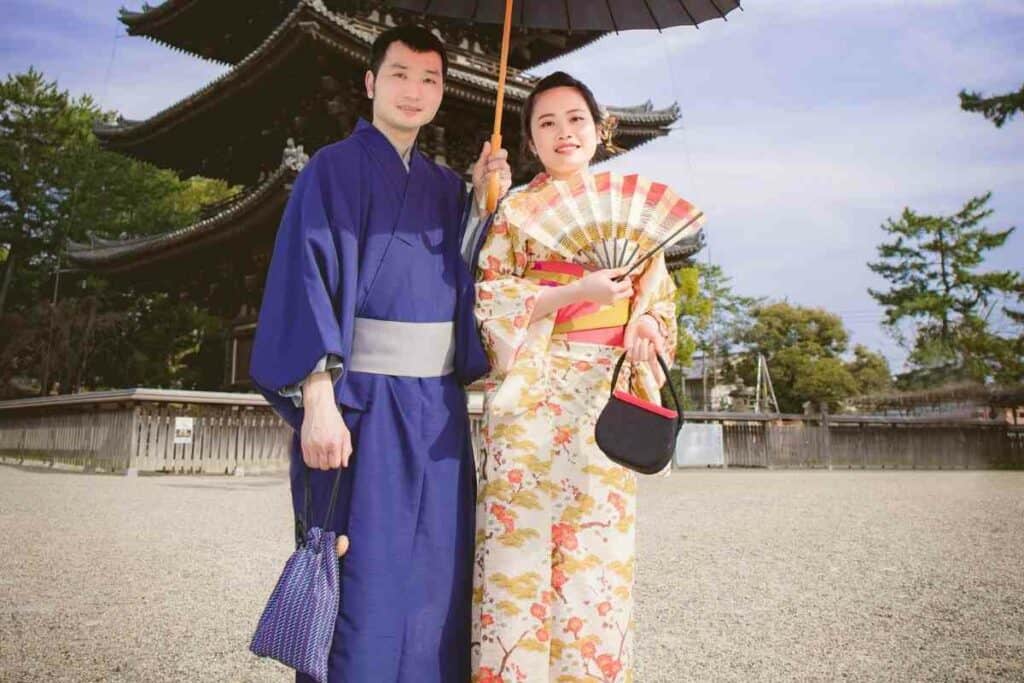
However, it’s just as important for men in terms of their traditional dress. Until around one hundred years ago, men and women in Japan both wore kimonos every day.
Nowadays, they’re worn more for special occasions, even by men.
Like Women – Men’s style of kimono is dictated by the occasion’s formality or by the man’s social rank. The higher the rank or the more formal the occasion, the kimono will be made of more items of clothing or more material.
Distinguished gentlemen or men attending a formal situation will wear a haori and hakama as well as a nagagi.
When the event is less formal, the man might wear just a nagagi and a haori. The most informal situations just require the man to wear a nagagi.
In terms of looks and decorations, men’s kimonos aren’t like women’s.
They typically don’t have patterns or bright colors. Instead, they are usually a more somber pallet, though they might have a family crest on them.
To distinguish how formal the occasion is or how high ranking a person is, you need to look at the material quality.
Read Also
- Best Japanese Knives Top Picks for Every Kitchen
- Japan’s Bold New Trend: Dressing Like a British Gentleman (or at Least Trying)
- 7 Best Japanese Sunscreen Products You Can Buy Online
- 5 Best Japanese Makeup Brushes for a Flawless Finish
- 7 Benefits Of Tatami Mats You Should Know
- The Best Furoshiki Wrapping Cloths: Inspiration, Ideas & Cloths You Can Buy


